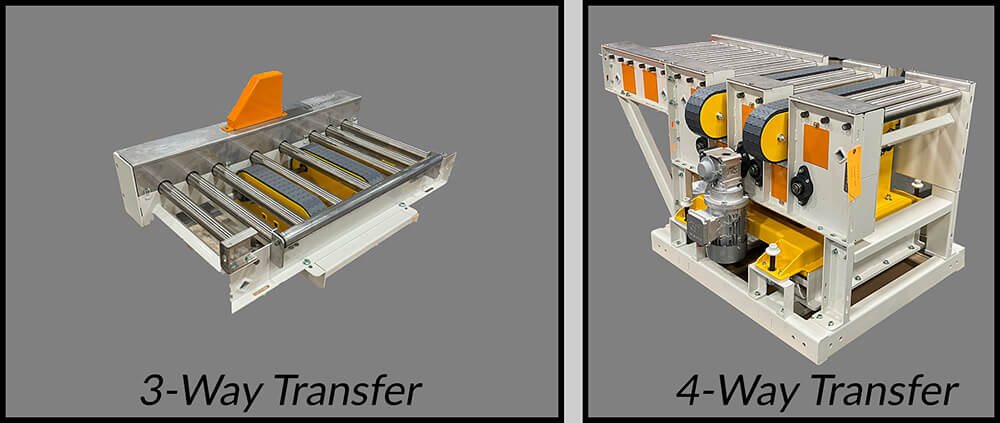Sticky, crumbly product. WM Kelley knows how to handle it.
WM Kelley works with a number of companies that manufacture synthetic rubber. We also support integrators that are responsible for installing the conveying systems to handle the bales of rubber.
Synthetic rubber is produced as a beige, “crumb-like” material. The crumb is molded into 75-pound bales. To limit shedding and contain the crumb, the bales are wrapped in plastic. They are shipped to plants that produce tires and other rubber products.
Crumb rubber is sticky. In the manufacturing process, after it is baled but before it is wrapped, the crumb coats conveyor rollers, side panels. It sticks to every surface it touches unless special materials are used in the manufacture of the conveyors. WM Kelley knows how to do this. We have had years of experience working with these companies.
The transfers shown here have stainless steel rollers and chain boxes. Any surface the crumb rubber bale touches is designed to sluff off the sticky crumb.
Another feature of our conveyors is the use of special belting. Our design uses interlocking belts made of a material that sheds the crumb rubber. Standard conveyor belting can’t do this. By designing our conveyors this way, we save our customers time that would otherwise be used to clean the crumb rubber off the conveyor surfaces. Lost production time from shutting down the process is reduced as well. We lower their costs.
This project is unique in another way. It includes both 3-way and 4-way transfers that allow fresh bales to be brought on-line. Bales rejected for any reason can also be shuttled off-line without disrupting the flow of material. The designs allow the product flow to be in the direction that is required for the situation.

You don’t have to be in the synthetic rubber business to take advantage of WM Kelley’s engineering experience and expertise. What is your material handling problem? Call us. We’d love to discuss solutions and how we can save you time and money as well.
